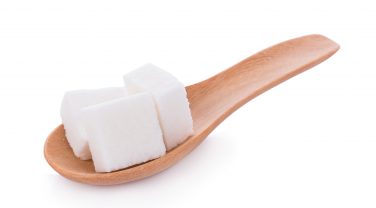Study: Using a grazing muzzle to control grass intake
Effects of an Equine Grazing Muzzle on Grass Intake – a preliminary investigation
Grazing muzzles are commonly recommended for controlling grass intake in overweight and laminitis prone horses and ponies, yet to the author’s knowledge at the time of study in 2005, there had been no published research to demonstrate by how much these devices limit intake, although one manufacturer claims a restriction of 50-75%. Furthermore, there are no reports on the effects of a muzzle on grazing behaviour and whether horses try to compensate for restriction, for example by increasing the time they spend grazing.
The scope of the study
This study was a small preliminary investigation undertaken for an M.Sc. in Equine Science in 2005. Four young horses with no prior experience of using a grazing muzzle were used in the study. Grass intake was determined using a Liveweight Change method during a six hour study period and instantaneous scan sampling at five minute intervals was used to monitor the horse’s behaviour, grazing or resting, for example. At the end of the grazing period, each horse was offered a standardised turf section and allowed to take ten bites. Bite depth, weight, area and volume were then measured to determine the effects of a grazing muzzle on bite parameters, which directly control the amount of grass consumed.
Using a grazing muzzle restricts grass intake by 75-86%
The results of this study demonstrated that the use of a grazing muzzle restricted grass intake by 75 – 86% in the horses used in this trial. The muzzled horses did not appear to try and compensate for restriction and spent more time resting and less time grazing than horses that were grazing freely. Muzzled horses had a 50% reduction in bite depth and a 62% reduction in bite weight, which is likely to provide the strongest evidence for how and by how much a muzzle restricts intake.
Although this study provided some interesting results, they should be used with caution as they only reflect this particular grazing situation with a very small number of horses, but do suggest that a grazing muzzle is an effective method for controlling grass intake. The duration of this study was not sufficient to identify if the horses grazing behaviour and therefore intake altered with experience of using the muzzle.
Top Tips for using a Grazing Muzzle
- Introduce the muzzle gradually and make wearing it a positive experience by gradually introducing the muzzle for short periods in the stable and rewarding your horse with a treat through the hole in the muzzle each time you put it on and take it off. As you progress outside with your horse wearing the muzzle, feed grass through the hole so your horse gets the idea that he can still eat. Initially leave the muzzle on for short periods gradually building up the time your horse grazes with the muzzle on.
- Make sure that your horse is comfortable drinking with the grazing muzzle on. Try this in the stable, first by offering a bucket of water directly to your horse in hand and you will find they are quick to investigate, especially if you have been offering treats through the hole in the muzzle!
- Make sure the muzzle fits correctly as this will help prevent your horse removing it!
- Don’t leave the muzzle on 24/7. Most manufacturers recommend up to 12 hours. Although you may be trying to restrict your horse’s intake it is vital that enough fibre is supplied to maintain your horse’s digestive health, so bring your horse into the stable when not at grass and supply low calorie/low sugar forage and feeds such as Dengie Hi-Fi Lite. Your horse or pony needs to eat up to 1 – 1.5% of their bodyweight in fibre each day.
- When your horse is not wearing the grazing muzzle bring them in off the grass as when they are able to graze freely they may try to compensate for the restriction earlier in the day.
- For the latest guidence on using a grazing muzzle from the National Equine Welfare Council please click here
If you would like further information on the products mentioned or on Tracey’s study call our Feedline on 01621 841188



